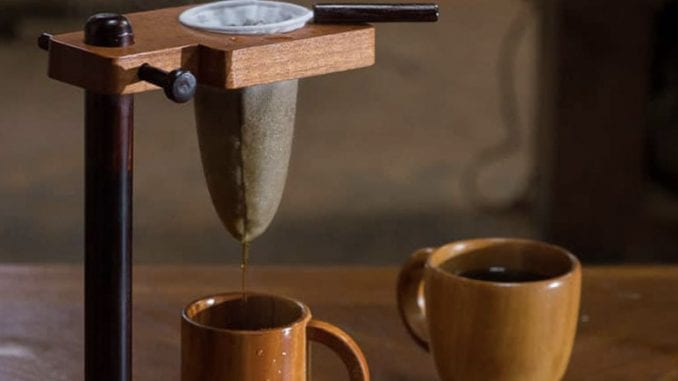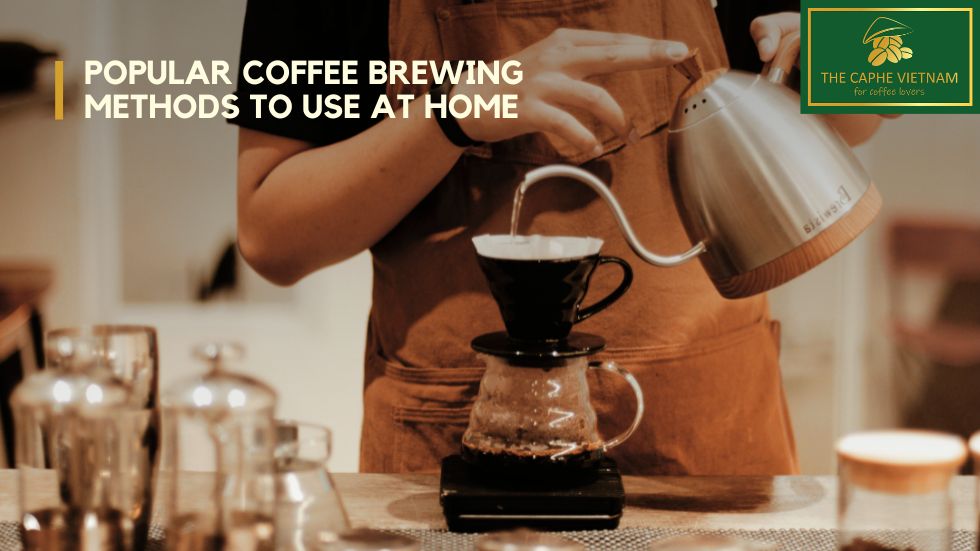Recognizing Various Coffee Brewing Methods for a Richer Flavor Experience
A detailed understanding of numerous coffee brewing methods can exceptionally affect your taste experience, disclosing the intricate nuances of this beloved beverage. Each method-- whether it be the simple drip coffee machine, the immersive French press, or the specific pour-over-- offers distinctive advantages that deal with diverse palates. Progressed techniques like coffee extraction and cool brewing further broaden the range of tastes available. As you consider which approach best suits your preference choices, the inquiry continues to be: exactly how do these techniques influence the final cup, and which might elevate your coffee experience to brand-new elevations?
Drip Coffee Machine
While many coffee fanatics appreciate the nuances of various brewing methods, the drip coffee manufacturer stays a staple in offices and households as a result of its simplicity and efficiency. This device operates by home heating water and enabling it to flow with coffee grounds, removing flavors and oils, which then trickle into a pitcher below.
The drip coffee manufacturer is preferred for its ability to make multiple mugs at the same time, making it excellent for hectic early mornings or events. Customers can conveniently personalize the strength of their coffee by changing the quantity of coffee grounds made use of or selecting a mixture strength setting located in numerous modern-day devices. In addition, programmable features enable customers to set a timer, making certain a fresh pot of coffee prepares upon waking.
Upkeep is reasonably straightforward, as a lot of drip coffee machine need routine cleansing to remove mineral build-up. Many designs are additionally geared up with attributes such as auto shut-off, which enhances security and power efficiency. Eventually, the drip coffee machine supplies a user-friendly and dependable choice for those looking for a regular and enjoyable coffee experience without the complexities of more sophisticated developing approaches.

French Press
The French press uses a distinct developing experience that contrasts greatly with the computerized procedure of a drip coffee machine. This manual method enables an intimate interaction with the coffee-making process, giving users greater control over various parameters, such as steeping time, coffee-to-water ratio, and grind size.
To make coffee making use of a French press, coarsely ground coffee beans are soaked in warm water for about 4 mins. This immersion method essences rich oils and flavors from the coffee, leading to a full-bodied beverage that highlights the nuances of the beans made use of. The steel or nylon mesh filter of the French press permits necessary oils to continue to be in the mixture, contributing to its robust flavor account.
When making use of a French press, it is necessary to focus on the developing time and water temperature, as these factors significantly influence the last taste. Experimentation with different coffee selections and soaking durations can lead to a personalized taste experience. Generally, the French press is a rewarding and obtainable approach for coffee lovers looking for to strengthen their gratitude for the complexities of their favored beverage.
Pour-Over Methods
Pour-over techniques raise the coffee developing experience by enabling specific control over every element of the procedure, from water temperature to putting technique. This technique involves manually putting hot water over coffee premises in a filter, typically located in a dripper, which permits ideal removal of flavors.
To begin, picking the right coffee grind is critical; a medium to medium-fine work functions best to guarantee correct water flow and extraction (coffee brewing methods). Next off, water temperature level should preferably range between 195 ° F and click reference 205 ° F, as this array removes the most effective flavors without scalding the coffee
The putting strategy additionally plays an essential role. A sluggish, round activity when saturating the grounds can help uniformly essence oils and tastes. It's often suggested to enable the coffee to grow for 30 secs after the initial pour, which lets carbon dioxide getaway and improves taste growth.
Coffee Machines
For those seeking a different yet my response equally satisfying developing experience, coffee equipments supply an unique method of coffee preparation that emphasizes pressure extraction. This process involves forcing warm water through finely-ground coffee at roughly 9 bars of pressure, resulting in a concentrated shot of espresso that showcases rich tastes and fragrances.

The high quality of espresso is affected by numerous elements, including work size, dose, water temperature level, and removal time. Accomplishing the perfect coffee shot needs practice and focus to information. Additionally, the coffee works as a base for various coffee drinks, such as lattes, cappuccinos, and Americanos, making it a functional option for coffee enthusiasts.

Cold Mixture Methods
Cold mixture coffee has gained appeal for its smooth, low-acidity profile and revitalizing taste, making it an excellent option for warm weather condition or those conscious typical brewing approaches - coffee brewing methods. The process of cool brewing commonly additional reading includes soaking coarsely ground coffee beans in cold or area temperature water for an extensive period, normally 12 to 24 hours. This technique extracts flavors differently than warm water, causing a rich, complicated brew that highlights fruity and chocolatey notes
There are numerous chilly mixture techniques available, consisting of immersion and drip developing. The immersion approach is the most simple; merely combine coffee and water in a container, let it high, and afterwards strain the premises. Alternatively, the drip method uses a customized coffee maker to slowly trickle water via coffee grounds, enabling an extra regulated extraction process.
Despite the technique picked, the coffee-to-water proportion is important, commonly recommended at 1:4 for a concentrated brew that can be weakened with water or milk prior to offering (coffee brewing methods). Cold mixture can be offered over ice, blended with flavored syrups, or used as a base for various coffee beverages, using adaptability and an one-of-a-kind preference experience
Conclusion
In final thought, exploring various coffee developing techniques considerably enriches the taste experience. Involving with these diverse brewing refines not only enhances admiration for coffee's intricacy but additionally encourages individuals to customize their coffee satisfaction according to personal choices.
Customers can quickly customize the stamina of their coffee by adjusting the quantity of coffee premises used or picking a brew toughness establishing found in several contemporary machines. Inevitably, the drip coffee maker supplies a straightforward and trustworthy option for those looking for a consistent and delightful coffee experience without the complexities of even more fancy developing methods.
To make coffee using a French press, coarsely ground coffee beans are soaked in warm water for roughly 4 minutes. Alternatively, the drip method uses a specialized coffee maker to gradually drip water with coffee premises, allowing for a much more regulated extraction procedure.
Involving with these diverse developing refines not only improves admiration for coffee's complexity however additionally empowers individuals to customize their coffee satisfaction according to personal preferences.